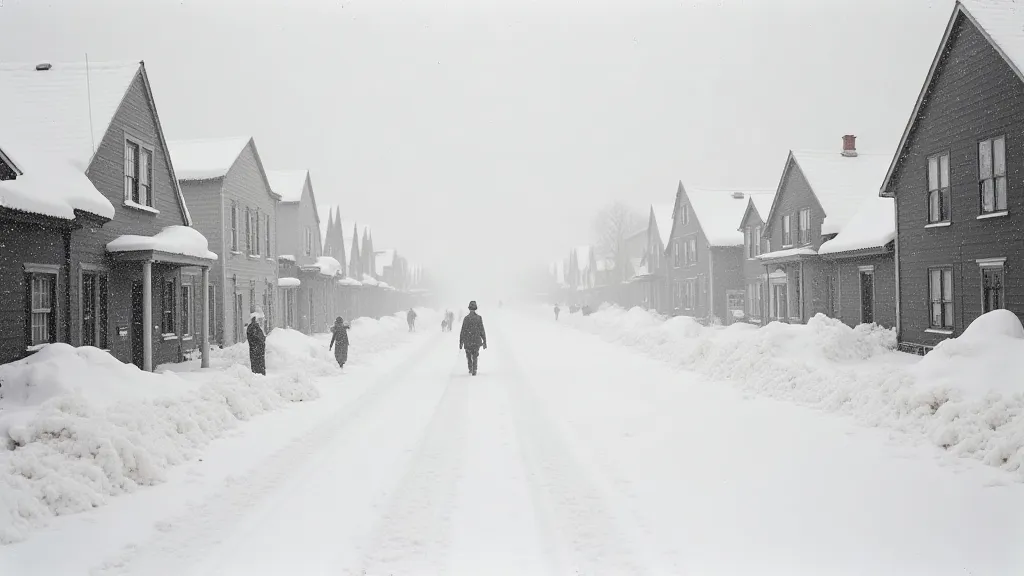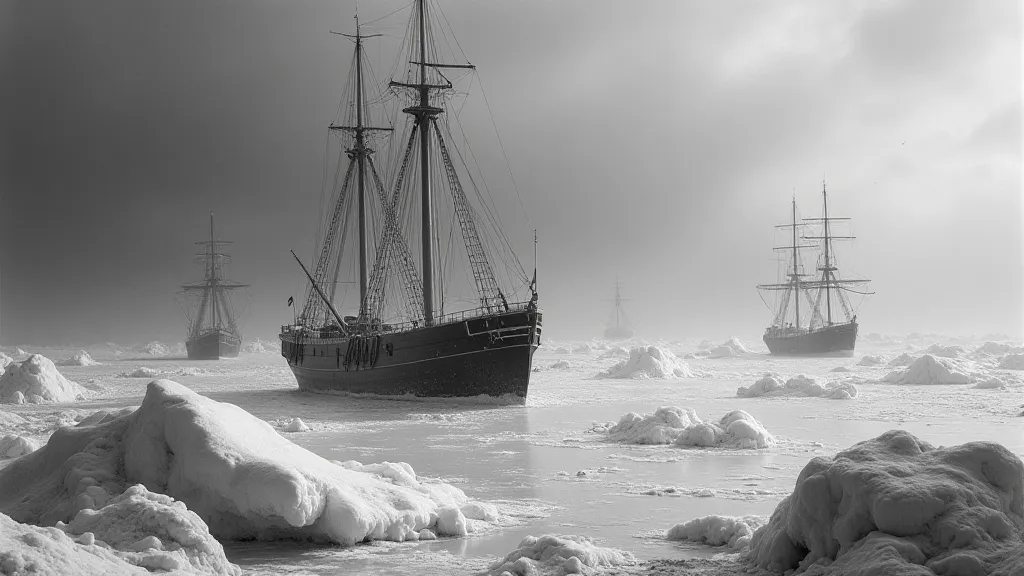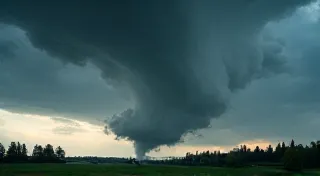The Great Blizzard of 1888: A Look Back at the 'Monster Storm'
The winter of 1888 remains etched in the memory of the Northeastern United States as a period of unprecedented devastation. Known as the “Great Blizzard” or the “Monster Storm,” this powerful nor’easter struck from March 11th to 14th, leaving a trail of destruction and disrupting life in a way not seen before. This article will delve into the historical records of this remarkable weather event, examining its impact and offering insights gleaned from analyzing historical weather data.
The Storm's Arrival and Intensity
Meteorological forecasts in 1888 were far less sophisticated than they are today. The understanding of large-scale weather systems was rudimentary, making accurate predictions incredibly difficult. While some indicators suggested a developing storm system in the Atlantic – subtle shifts in barometric pressure and unusual wind patterns – the speed and intensity with which it developed caught many completely off guard. The blizzard rapidly intensified as it moved northeastward, drawing moisture from the Atlantic and colliding with a cold air mass over the Eastern Seaboard. The resulting confluence created a powerful and unexpected storm, fueled by the unusually warm Atlantic waters that winter.

Snowfall Totals and Geographical Impact
Snowfall rates were staggering. New York City received between 20 and 30 inches of snow, while areas in New England experienced totals exceeding 40 inches. The sheer volume of snow was compounded by hurricane-force winds, creating blizzard conditions with near-zero visibility. Coastal areas were particularly hard hit, with significant coastal flooding and wave damage. The combination of heavy snowfall and powerful winds created a situation that truly overwhelmed infrastructure and emergency response capabilities.
The storm's impact wasn't limited to snow. Freezing rain and sleet added to the treacherous conditions, turning roads into sheets of ice and making travel even more perilous. Transportation ground to a halt – railroads were blocked, telegraph lines were down, and roads were impassable. Many were stranded in their homes for days, struggling to find food and warmth. The blizzard underscored the fragile nature of infrastructure and the importance of resilient systems that can withstand extreme weather events. It’s interesting to compare this devastation with records of past winters and snowfall records across regions, revealing patterns of regional vulnerability.
Economic Disruption and Loss of Life
The Great Blizzard of 1888 inflicted significant economic damage. The disruption of transportation networks brought commerce to a standstill. Shipping was halted, and the movement of goods was severely hampered. The cost of recovery was substantial, requiring a massive effort to clear snow and repair infrastructure. The impact reverberated through industries relying on timely transportation, from coal to consumer goods. The immediate economic shock was compounded by the long-term disruption to supply chains and the need for extensive rebuilding.
Tragically, the blizzard claimed the lives of approximately 400 people. Many perished from exposure, succumbing to hypothermia in the frigid temperatures. Others were lost at sea, their vessels overwhelmed by the relentless waves and wind. Still others died in transportation accidents – train derailments, collisions in the blinding snow, and collapses of poorly constructed structures. The storm highlighted the vulnerability of communities to extreme weather events and the critical importance of preparedness. Understanding how early agricultural practices might have subtly influenced the regional climate, potentially exacerbating the storm’s severity, is a fascinating area of study, and it connects to larger themes explored in articles examining the relationship between agriculture and climate.
Long-Term Recovery and Lessons Learned
The recovery process was lengthy and arduous. Clearing snow was a monumental task, requiring the mobilization of manpower and equipment. The sheer volume of snow made it nearly impossible to move it quickly, and the frozen conditions further complicated the process. The blizzard prompted improvements in weather forecasting and disaster preparedness. Recognizing the limitations of the existing forecasting techniques, investments were made in developing better instruments and more sophisticated models – albeit still very rudimentary by today's standards. New technologies were developed to mitigate the impacts of future storms, including improved snow removal equipment and more robust building codes, although the event underscored the raw power of nature.

Analyzing Historical Weather Data
Analyzing historical weather records from 1888 provides invaluable insights into the storm’s unusual intensity. Examining temperature patterns, atmospheric pressure readings, and wind velocities reveals a complex interplay of meteorological factors that contributed to the blizzard’s severity. While predicting such an event with accuracy was impossible at the time – lacking modern satellite imagery and advanced computer modeling – the data helps scientists better understand the mechanisms that drive extreme winter storms and how climate patterns may be changing over time. Careful study of these records allows researchers to reconstruct the storm’s progression and identify the key conditions that led to its explosive development.
Comparing the 1888 blizzard with other historical winter storms highlights its exceptional characteristics. The combination of heavy snowfall, strong winds, and unusually cold temperatures made it a truly exceptional event, an enduring testament to the power and unpredictability of the natural world. Understanding the evolution of weather forecasting techniques, moving from the rudimentary observations of the 19th century to the sophisticated systems we rely on today, is also incredibly revealing – something further explored in articles detailing the history of weather forecasting.

Beyond Snow: Considering Hailstorms and Severe Weather
While the Great Blizzard of 1888 is most remembered for its devastating snowfall, it's important to consider the broader context of severe winter weather events. Alongside blizzards, hailstorms also pose significant threats to infrastructure and agriculture. Studying the regional trends and historical records of these severe weather phenomena helps us build a more complete picture of the challenges faced by communities throughout history. Understanding the complex interplay of atmospheric conditions that contribute to both blizzards and hailstorms allows for a more nuanced approach to risk assessment and disaster preparedness. The sheer force and destructive potential of such events should not be underestimated, underscoring the importance of continuous improvement in weather forecasting and mitigation strategies. The intensity and localized impact of hailstorms are particularly noteworthy and offer a fascinating comparison to the widespread devastation of the 1888 blizzard.
Conclusion
The Great Blizzard of 1888 stands as a stark reminder of the devastating potential of extreme weather. Its legacy extends beyond the immediate destruction, prompting improvements in forecasting, preparedness, and infrastructure. By studying historical weather patterns and analyzing climate data, we can gain a better understanding of these events and work toward mitigating their impact in the future. The “Monster Storm” serves as a poignant lesson in respecting the power of nature and the importance of resilience in the face of adversity. The enduring lessons of the 1888 blizzard continue to inform our approach to disaster management and highlight the ongoing need for vigilance and innovation in the face of increasingly complex climate challenges.





